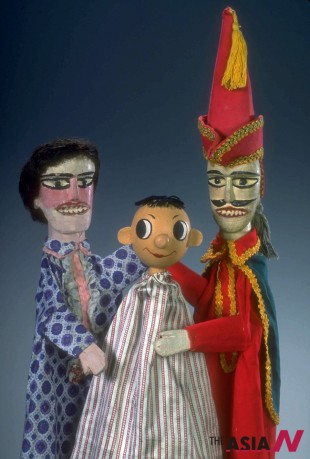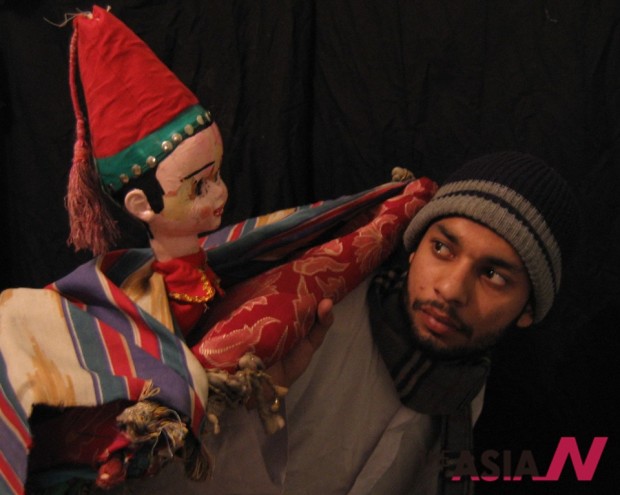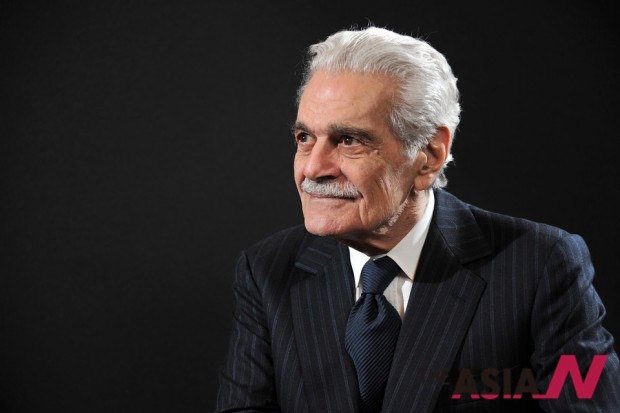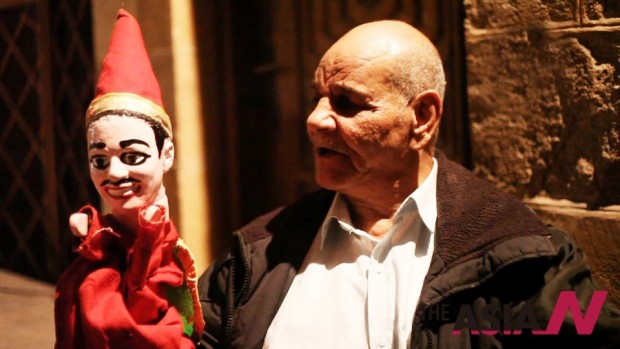
Arajuz: A Fortune of Happiness

In our childhood, the acts of Arajuz , performed behind a huge box with red curtains to look like a mini theatre, were pushing us to laugh for hours.
Defined by Dr. Abdul-Hamid Younes, an Egyptian folklore expert and historian, Arajuz is a type of indirect acting, with few characters, performed by wooden puppets, closer to nowadays puppet theatres, where the player who moves those puppets hides in a small house, just to show above him in the opening window, the Arajuz , his wife and his mother-in-law. The three of them are totally different in colors, shape and gender. In its Egyptian version, this Arajuz is a real public type of art. It is public in the way they speak and react. And they also public in choosing themes and slangs. With his unique voice, Arajuz is telling humors to teach good social behavior and traditions.
It needed Dr. Nabil Bahjat to become the Cultural Attaché of the Egyptian Embassy in Kuwait, to remind ourselves with those old days. Bahjat is a real collector of the Arajuz history and puppets, and he is the only researcher to specialize in Arajuz in the Middle East, offering the literary Arabic library with a huge book entitled ” Arajuz “.
He told me of those puppeteer artists, praising them, that they are the carriers of Egyptian heritage who kept it alive. Mentioning their Egyptian master senior; Uncle Saber, the oldest player of Arajuz in the world, who is still practicing his art for more than fifty years.
The group of puppeteer artists, invited by Dr. Bahjat to travel from Egypt to perform in Kuwait theatres and schools. The group, which work on the revival and documenting this art, included many artists such as Saber Chico (Young Saber), Abu Zaid, Mahmoud Sayed Hanafi, Mustafa Sabbagh and Walid Saber. He sees them as the backbone of folk art, that keeps the creative and beautiful aspects of it.

The word “Arajuz” could be deprived from a Pharaonic origin, that means the tales maker. According to some other researchers, it could be the colloquial translation of “I can see two”, as player often plays with two puppets. Others thing it is a modification of an old dictator who ruled Egypt, named Qaraqush.
Indeed, many people use the word “Arajuz” to signify different meanings in the everyday life dictionary of Egyptians. The presence of Arajuz art appears in different roles, each show a character, such as the son of the Puppet, his wife “Nafusa”, His black wife “Bakhita” whom sometimes called Lady Moon!, the Bald Hamouda and his brother, the Professor – The Barbarian – the Foreigner – Moshe Dayan – Sprite – The doctor – The Sergeant – The artist “Sheikh Mohammed” – the bigger, and so on.

In cinema, Omar Sharif was the most famous actor to introduce the character of Arajuz, when he acted as puppeteer player in a film that carried the same name, Al-Arajuz, telling the naked truth to the villagers in a small Egyptian countryside.
Puppet artists themselves differ in determining the number of Puppet shows in every event. In an interview with Uncle Saber, he told Dr. Bahjat: “The real man of Arajuz is the artist who could spend 24 hours behind the curtains to play his shows”. Some players, such as Samir Abdel Azim, perform 18 shows in consequence. Hassan Sultan could play 164 tiger, and Salah al-Masri had 24 shows, that is called “nemra” in Arabic, which all cover the marriage, the trade, the business, the army and all aspects of life, played basically in streets, to create a common platform with audience. The Arajuz artists use special songs to serve the drama of their acts. They also create a dialogue between the puppets and the audience, that allows the public to intervene in shows, including tin singing the beginning lyrics.
As Spring knocks the door, the world celebrate the Day of Dolls, and it is also the Day of Arajuz in Egypt. The similar doll is imitated in other countries like Turkey. As this year’s manifesto expresses, it is offering a fortune of happiness.

Uncle Saber, Master Senior puppeteer player, Wamdha Group, signed this note, which expresses his impressions and dreams. He says; ” In the same certain moment, when human memory bleeds and loses its power, when human beings miss their important feelings before the jail bars of technology; that witnessed a huge progress to make the man more isolated, and easier to involve in radical movements, especially amid the spread of bloody creation consumed by millions in video games, as a practice to kill and destroy.
In that certain moment, where tunes of hatred are louder than any peaceful sounds and meaningful voices; something that deprives more children from the realm of happiness… In such a moment, the reason becomes a necessity for every artist to believe in. It is also a must that every artist has the faith of himself being an individual state that has to create his/ her own pillars to work, continue and rise. It is a must to set himself / herself free the prison of financial sponsorship, and to become totally free, and to own the needed tools to continue.
We have to transfer our experiences, to teach each other, and to open doors wide for all experiences and trials. Let “Wamdha” be the flashing light in the heart of darkness, as any night can’t stop the rays of the sunny days. Let our slogan this year be; ” A Fortune of Happiness”, a fortune collected from the garden where smiles of children grow, in all deprived and poor areas, to touch the light inside us.




